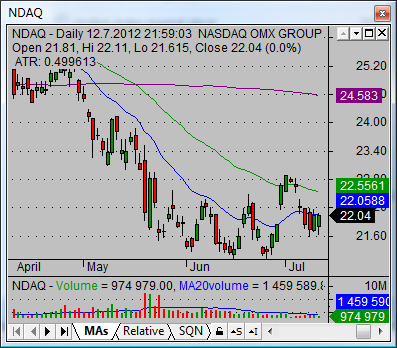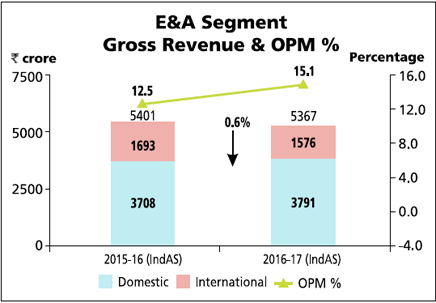Contents
A floating rate fund invests in financial securities that pay a floating or variable rate of interest. A floating rate fund that may be a Mutual Fund or an exchange-traded fund invests in Bonds and financial instruments whose interest payments fluctuate with the level of the Underlying interest rate. At the same time, the reverse can happen in a falling interest rate scenario. The open-ended nature of a floating rate fund provides investors more flexibility in terms of entry and exit and the time of staying invested. These funds aim to generate returns by creating a portfolio that is primarily invested in floating rate instruments. – Floater funds are an excellent tool for diversifying your capital investment.

In this, one bond has a fixed coupon rate, which most bonds have, and the other bond in the deal will have a floating interest rate. In our example, Ajay pays the RBI repo rate, 4%, or higher, or lower. As mentioned earlier, floating interest is not a defined interest rate but depends upon a benchmark, say MIBOR.
Floating rate funds may hold corporate bonds near to junk status or loans in danger of default. Although floating funds offer higher returns in a rising rate environment , investors must assess the dangers of investing in the funds and investigate the fund holdings. Other short-term bond funds that invest solely in Treasuries exist, although they may have a fixed rate or a lower yield than floating rate funds. Before making a decision, investors must assess the risks and rewards of each investment.
A diversified portfolio of debt securities
Floater funds are suitable for the medium duration for investment up to a few years. Liquid fund is ideal for the duration of a few days or a few months. One can choose to invest in securities that have a high credit quality or rating where the risk of default is minimal.

Floater funds are more secure investment avenue compared to equity investments. In the case of floater funds, however, there is also credit risk. That’s why one should invest in floater funds in their investment portfolio that have high credit rating securities.
Because of its low-risk feature, floater funds appeal to risk-averse investors. These funds typically choose among various debt instruments for investment, which allows them to disperse risks and secure the principal component. In case of a rise in the prevailing market interest rate, the returns from floater funds also increase, making it a profitable investment.
The shorter lock-in period ensures that funds can be accessed to meet both expected and unscheduled financial obligations. Floating rate funds are debt funds that invest in floating rate debt. There are bonds that pegged to a certain benchmark and whenever the yield goes up beyond a range the rate on return on these floating rate bonds is also adjusted upwards. This adjustment is done immediately and seamlessly and thus in a rising interest rate scenario, the yield on these floating rate bonds actually outperforms other forms of bonds that pay fixed rates of interest. Floating rate funds will only work when the interest rates are moving upwards and the yields are also headed higher. In most of the other cases, floating rate funds will tend to underperform the other classes of funds.
Fund Manager’s Expertise
This is why most fund managers choose high-quality bonds for investments. As shown in the chart below, there is wide choice, to invest as per investor’s risk-return profile and life stage. As the investor’s age advances, the risk-taking capacity may diminish. Hence, investment in shorter maturity schemes such as fixed maturity plans, liquid funds and ultra-short term debt funds may be considered.
One, check the average maturity of the fund’s portfolio as this has a bearing on your returns. The lower the average maturity period, the lower the fund’s volatility and your returns. On the other hand, a fund with a long maturity period is likely to be more volatile, but the returns are likely to be better.
If there is an expectation that interest rates are likely to rise, then investors might want to consider parking funds in this avenue to leverage the rising interest rate scenario. On the contrary, if the outlook for interest rates is gloomy, then one may choose to park in other debt mutual funds which have a fixed interest rate. Floater funds are debt funds that invest in floating-rate corporate bonds and other fixed-income instruments, including money market instruments and government securities. For instance, if the interest rates are falling, short- to long-term bond and gilt funds would bode well. In terms of operation, debt funds are not entirely different from other mutual fund schemes. However, in terms of safety, they score higher than equity mutual funds.
- The rest of the capital is allocated to shares with fixed income.
- On the other hand, floating interests are subject to change according to a specific benchmark.
- Floater fund returnsdepend on interest rate fluctuations in the economy.
- Asset management companies offer numerous floater funds, meaning you can select one according to your financial goals and capitalize on the changing interest rate in the debt market.
- In other words, the floater funds do not have a fixed coupon rate.
These funds help investors minimize interest rate risk as they offer flexibility to alter the portfolio maturity according to the interest rate scenario. Maturity is longer when interest rates fall and shorter when interest rates rise. Credit Opportunity Funds These funds purchase bonds in lower rated bonds to generate higher returns/yields. Suitable only for investors with a profile to take higher risk as investing down the rating spectrum adds to the risk of the portfolio.
Floater Mutual Funds
Floating rate debt funds are open-ended debt funds that invest in debt securities that have a floating rate . This feature makes floating rate funds different from all other debt funds that buy securities having a fixed interest rate. So, the interest rate hikes can benefit floating rate funds but, to an extent and with caveats and conditions. Remember, even in a Floater Fund, 35% of the portfolio can be the usual fixed coupon stuff. It helps only when RBI steps in, hike rates and inter-bank rates move up. Floater Funds investment is ideal for investors who want to earn good returns but want a stable investment option.
As with all debt funds, floater fund long-term returns are taxed at 20% after factoring in indexation. Four, the best tool to capture the interest rate sensitivity of a debt fund is modified duration. It tells you how much the price of a bond would move if interest rates move up or down by 1 per cent. The higher the modified duration, the greater will be the impact of an interest rate change. Mutual funds give you access to all the information in their offer documents and other periodic disclosures for you to make an informed decision. It is then up to you to take the investment decision and sign the form, or channel the money to suit your financial needs.
If the holding period of the fund is less than three years, it is called short term capital gains. The capital gains tax will be levied as per the investor’s income tax slab rates. If the holding period of the fund is more than three years, it is called long term capital gains. The capital gains tax liability will be 20% with indexation benefit or 10% without indexation. An investor whose financial goals matches with the fund should invest in floater funds.
All efforts have been made to ensure the information provided here is accurate. Please verify with scheme information document before making any investment. LTCG– LTCG or Long-Term Capital Gains tax apply on all withdrawals made after three years from the investment date. The applicable rate is 10% without indexation or 20% with indexation.

Generally, floater funds’ performances are generally measured against the CRISIL Low Duration Debt or NIFTY Low Duration Debt Index. They invest primarily in debt instruments of various maturities in line with the objective of the funds and any remaining funds in short-term instruments such as Money Market instruments. These funds generally invest in instruments with medium- to long-term maturities. Systematic withdrawal plan is a payment option in a mutual fund that lets you redeem units worth a pre-specified amount at a specific intervals (monthly, quarterly, half-yearly or annually). Exit load isan effective mechanism that prompts investors to stay invested through the desired holding period.
Floating Rate Debt Funds – Definition, Benefits and Should You Invest in Them
It allocates a significant part of the corpus in debt instruments with floating interest rates and takes advantage of changing interest rates to generate quality returns for investors. Understanding debt floater mutual funds, its characteristics, as well as the right time for investment, can help individuals make the right decision regarding investment. Furthermore, the tenure of investment should be made in tune with predicted market conditions in the future, as well as financial goals and upcoming expenses of investors. A floater fund majorly comprises debt securities which provide a varying rate of returns depending on market fluctuations or benchmark indices. Hence, investors can benefit from fluctuations of the business cycle, as it affects the returns generated by standard stock market instruments significantly.
Stocks
On the site we feature industry and political leaders, entrepreneurs, and trend setters. The research, personal finance and market tutorial sections are widely followed by students, academia, corporates and investors among others. It is imperative to understand that there is an element of credit risk in floater funds. This essentially means that there is a chance https://1investing.in/ that the bond issuer may default on the payments. Investors must ensure that the securities in a variable rate fund are appropriate for their risk tolerance while reviewing the fund. Floating rate funds carry various risk levels across the credit quality spectrum, with high-yielding, lower-credit-quality investments posing significantly more significant hazards.
From 8 January 2021 to early / mid-March 2021, interest rates on money market instruments increased. In a situation where interest rates are moving up, you would expect floating rate funds to give better returns, right? On top of it, certain money market funds yielded positive returns, though relatively lower than better times. The floater fund floater fund meaning is the fund that invests in variable or floating interest rate paying financial instruments. The key benefit of these funds is their lower degree of exposure to interest rate changes relative to the funds or instruments that provide a fixed rate of payment. These funds are attracting investors in an environment of rising interest rates.
